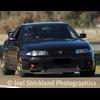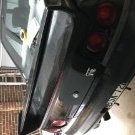New Vq35hr And Vq25hr Engines For V36
Announcements
-
Similar Content
-
Latest Posts
-
Sorry for the basic question...but if the driveshaft has 2 unis, are they aligned properly? If they are 90o out it will vibrate like a bastard
-
By TurboTapin · Posted
Thanks! I have my driveshaft currently off, but length will vary greatly due to how you adapt the CD to your engine. If by front of yoke to rear flange you mean overall length then it's 56 3/4" long. -
I hear they also spin bearings like an RB26...
-
It is a team event min 3 cars min 4 drivers, max 6 cars max 6 drivers. One car per team in track at a time. No in car timers allowed. We decided to enter the event and Rhys impulse bought the Kia on their lunch break. Regarding scoring, the way we thought it worked was: set your lap time before the event. for your elected time +/- 0.5 sec you get 2 points otherwise you get 1 point. the way it actually worked: set your time before the event for your elected time +0.9999 of your time you get 2 points. >1sec slower you get 1 point Any faster than your elected time at all you get -1 point I elected a cruisey 1:27 because there would be traffic and we did not understand the rules . But did 1:22-1:25 all day. Hence penalties.
-
By soviet_merlin · Posted
So, why the penalties and how does the Kia fit into this? Was it bought with the intention of taking it on track? I'd say the cooling holding up by itself already sounds like a huge win.
-








Recommended Posts
Create an account or sign in to comment
You need to be a member in order to leave a comment
Create an account
Sign up for a new account in our community. It's easy!
Register a new accountSign in
Already have an account? Sign in here.
Sign In Now